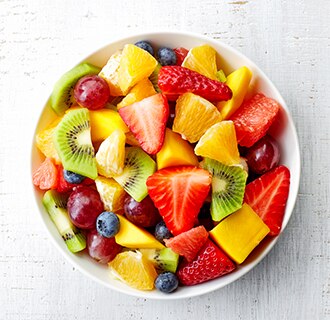Eating, Diet, & Nutrition for Irritable Bowel Syndrome
How can my diet help treat the symptoms of IBS?
Your doctor may recommend changes in your diet to help treat symptoms of irritable bowel syndrome (IBS). Your doctor may suggest that you
Different changes may help different people with IBS. You may need to change what you eat for several weeks to see if your symptoms improve. Your doctor may also recommend talking with a dietitian.
Eat more fiber
Fiber may improve constipation in IBS because it makes stool soft and easier to pass. The Dietary Guidelines for Americans, 2020–2025 recommends that adults should get 22 to 34 grams of fiber a day.3
Two types of fiber are
- soluble fiber, which is found in beans, fruit, and oat products
- insoluble fiber, which is found in whole-grain products and vegetables
Research suggests that soluble fiber is more helpful in relieving IBS symptoms.
To help your body get used to more fiber, add foods with fiber to your diet a little at a time. Too much fiber at once can cause gas, which can trigger IBS symptoms. Adding fiber to your diet slowly, by 2 to 3 grams a day, may help prevent gas and bloating.

Avoid gluten
Your doctor may recommend avoiding foods that contain gluten—a protein found in wheat, barley, and rye—to see if your IBS symptoms improve. Foods that contain gluten include most cereal, grains, and pasta, and many processed foods. Some people with IBS have more symptoms after eating gluten, even though they do not have celiac disease.
Low FODMAP diet
Your doctor may recommend that you try a special diet—called the low FODMAP diet—to reduce or avoid certain foods that contain carbohydrates that are hard to digest. These carbohydrates are called FODMAPs.
Examples of foods that contain FODMAPs include
- fruits such as apples, apricots, blackberries, cherries, mango, nectarines, pears, plums, and watermelon, or juice containing any of these fruits
- canned fruit in natural fruit juice, or large amounts of fruit juice or dried fruit
- vegetables such as artichokes, asparagus, beans, cabbage, cauliflower, garlic and garlic salts, lentils, mushrooms, onions, and sugar snap or snow peas
- dairy products such as milk, milk products, soft cheeses, yogurt, custard, and ice cream
- wheat and rye products
- honey and foods with high-fructose corn syrup
- products, including candy and gum, with sweeteners ending in “–ol,” such as sorbitol, mannitol, xylitol, and maltitol
Your doctor may suggest that you try the low FODMAP diet for a few weeks to see if it helps with your symptoms. If your symptoms improve, your doctor may recommend slowly adding foods that contain FODMAPs back into your diet. You may be able to eat some foods with FODMAPs without having IBS symptoms.
Reference
This content is provided as a service of the National Institute of Diabetes and Digestive and Kidney Diseases
(NIDDK), part of the National Institutes of Health. NIDDK translates and disseminates research findings to increase knowledge and understanding about health and disease among patients, health professionals, and the public. Content produced by NIDDK is carefully reviewed by NIDDK scientists and other experts.
The NIDDK would like to thank:
Lin Chang, M.D., David Geffen School of Medicine, University of California Los Angeles

